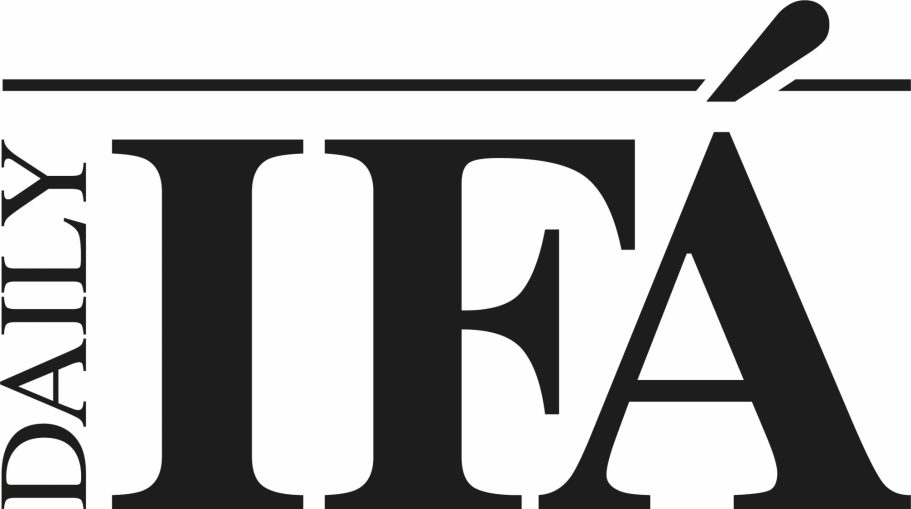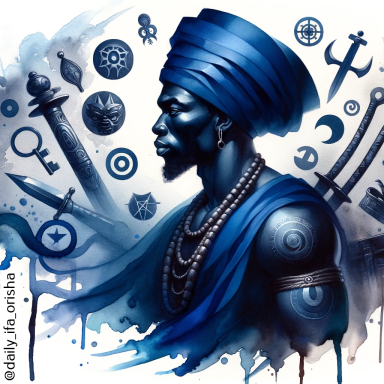
About ORISHÀ OGÚN
The Orishá of Iron, Technology, and Warfare. Ogún is a central figure in Yoruba religion, known for his associations with iron, technology, warfare, and as a protector and warrior deity.
Ogún's influence in a person's life is significant and multifaceted. He embodies the virtues of strength, protection, and justice. As a deity of iron and technology, he inspires creativity and innovation. His role as a path opener signifies his ability to remove obstacles and usher in new opportunities. As a warrior and protector, Ogún offers a sense of security and resilience against challenges. In the sphere of work and craftsmanship, he is a symbol of hard work, skill, and the value of manual labor. Ogún's presence in a person's life underscores the importance of strength, perseverance, and the ethical use of power and technology.
About the ORISHÁ
Roles and
Influence
- God of Iron and Technology: Ogún is revered as the patron deity of blacksmiths and anyone working with metal, symbolizing mastery over iron and technology.
- Warrior Deity: Known as a fierce warrior, Ogún uses his iron weapons to defend his followers and fight against injustice.
- Protector: He is invoked for protection against physical and spiritual harm, emphasizing his role as a powerful guardian.
- Opener of Paths: Ogún clears obstacles, using his machete to forge paths for new beginnings and progress.
- Patron of Craftspeople and Workers: He is the patron of those involved in craftsmanship and manual labor, highlighting the value of hard work and dedication.
- Spirit of Creativity and Innovation: In his role related to technology and craftsmanship, Ogún embodies creativity and innovation.
- Bringer of Justice: Wielding his iron weapons, he enforces divine law and combats corruption.
- God of Politics and Leadership: Ogún is also associated with governance, acting as a divine enforcer of social order and political power.
- Symbol of Unrestrained Desire: His power can become destructive if not controlled, symbolizing the dangers of unchecked power.
- Patron of Hunters: As a deity connected to wilderness and hunting, Ogún provides hunters with skill and strength.
Characteristics and Symbolism
- Symbols: Ogún is represented by a saber, small crown, fringe of oil palm leaf, and other tools associated with ironworking.
- Colors: His colors are royal blue and green, symbolizing various aspects of his nature.
- Natural Places: Roads, paths, and particularly railway tracks are significant to Ogún, with intersections being his domain.
- Flowers and Essences: Solstice carnation, red palms, and violet essences are linked to him.
- Stones: Stones like lapis lazuli, granate, ruby, topaz, and sardio are associated with Ogún.
- Metal: Iron, steel, and manganese are his metals, underscoring his connection to metallurgy.
- Health: He is connected to the heart and endocrine glands.
- Planet and Weekday: Mars is his planet, and Tuesday is his designated day.
- Element: His elements are metal, earth, and fire, reflecting his dynamic and transformative nature.
- Animals/Offerings: Offerings to Ogún include rooster, male goat, duck, dog (in Africa), and specific foods and plants.
- Syncretism: He is syncretized with St. George or St. Anthony in some traditions.
- Commemoration Day: June 13th is dedicated to celebrating Ogún.
Key Manifestations (Aspects)
Ogun manifests in over hundred forms, including
- Ogum Ajá or Ogunjá - He belongs to the group of Ajás, the "three great white warriors" (Ajagunã, Jagum, and Ogunjá). Associated Orishás: Oxaguiã and Yemanjá Ogunté.
- Ogum Ajaká - The most warlike of all Oguns; divinity of blood and the heat of battles. He is connected to the rage and madness of the storm. Associated Orishás: Shango.
- Ogum Ajô - Protector of the houses/temples of Candomblé. Associated Orishá: Eshu Lonã.
- Ogum Akorô - Son of Yemanjá Ogunté and Ogum Alabedê. Strongly connected to his brother Odé, family as an institution, and matriarchal power. He is more peaceful than the other Oguns. Associated Orishás: Odé, Yemanjá Ogunté, and Ogum Alabedê.
- Ogum Alabedé (Alágbèdé) or Abedé Orum (Àgbede Ôrun) - Acknowledged as the oldest blacksmith and creator of the weapons of the great hunters. He is referred to as the "warrior of the Oruns" and is a companion of Obatalá. Associated Orishás: Oshun.
- Ogum Arê - Ogum connected with water and metals that come from the rivers. He uses some golden props. Associated Orishás: Oshun and Yemanjá.
- Ogum Arê - Connected with Oxum and Yemanjá and with water. He is the "Lord of the golden color."
- Ogum Mejê - Connected to Yemanjá and Oxossi. Ancestor Ogum, the oldest of all Oguns. He wears dark blue. Associated Orishás: Eshu, Odé, Yemanjá.
- Ogum Olodé - Ogum connected to hunting and wild animals. It has solitary characteristics. Associated Orishás: Odé, Oyá Olokerê.
- Ogum Onirê - Connected to the city of Irê; Ogum is associated with death and lineage. Associated Orishás: Oduduwá.
- Ogum Oromina - Connected to Eshu and Shangô.
- Ogum Popô - Connected to the Jeje Orishás.
- Ogum Wari (or Wori, Warin) - Ogum connected to witchcraft, the water of Oxum, ancestors, and magic. Associated Orishás: Oshun and Iyami Oxorongá.
- Ogum Shoroquê - Ogum of agitation and transformation, closely connected to Eshu. It is said that he is a "half" Eshu. Associated Orishás: Eshu, Odé, Oshóssi.
Sign-Up for free to your Weekly Newsletter.
Illustrations of the Orishá
Wir benötigen Ihre Zustimmung zum Laden der Übersetzungen
Wir nutzen einen Drittanbieter-Service, um den Inhalt der Website zu übersetzen, der möglicherweise Daten über Ihre Aktivitäten sammelt. Bitte prüfen Sie die Details und akzeptieren Sie den Dienst, um die Übersetzungen zu sehen.




